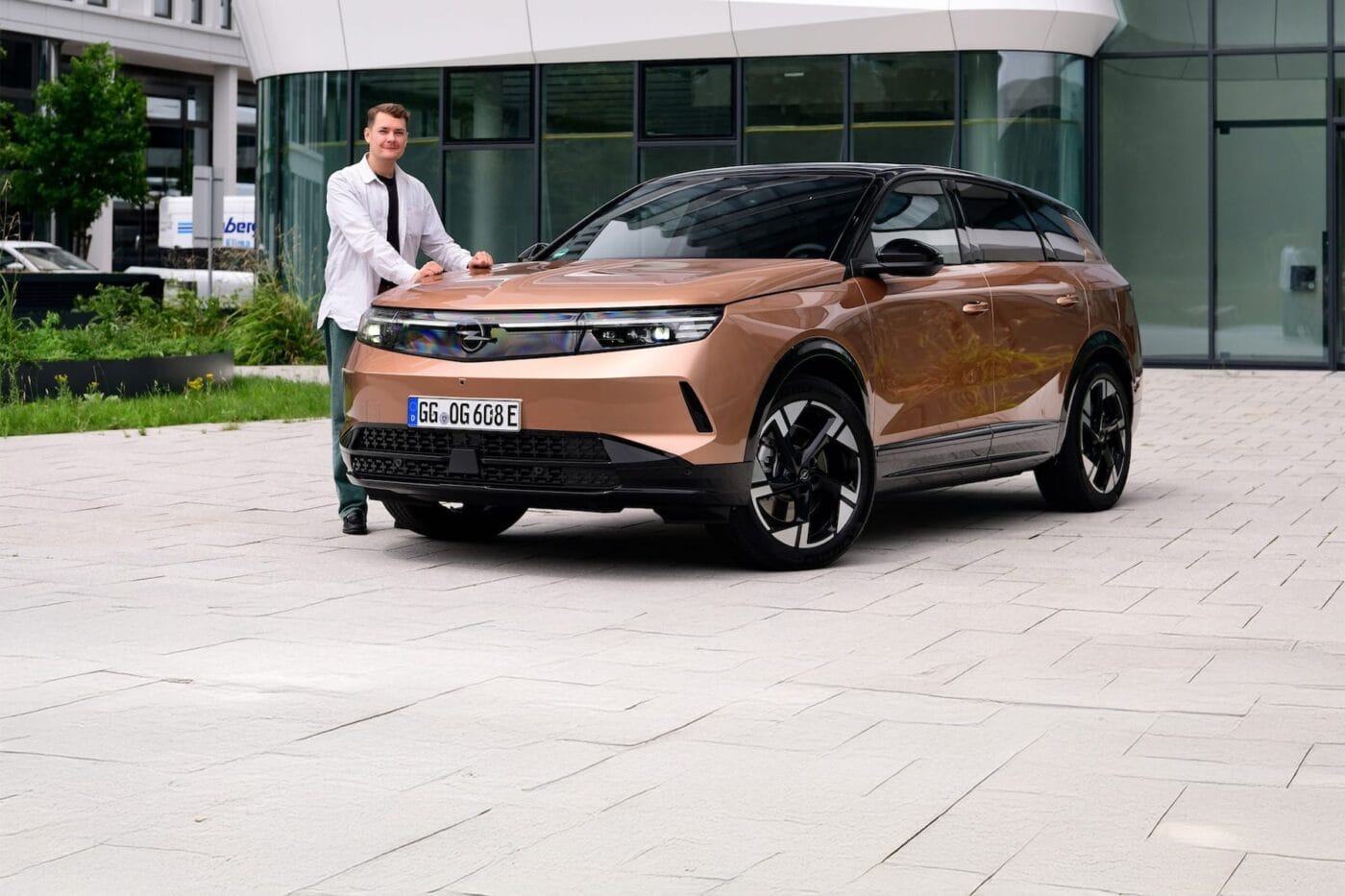
First drive in the Opel Grandland Electric -waiting for the big battery
Opel’s second-generation Grandland carries serious expectations. It’s the brand’s first upper-tier model with a fully electric powertrain and the first Opel to use Stellantis’ new STLA Medium platform. At 4.65 metres long, the Grandland pushes the upper edge of the compact SUV class, verging on mid-size dimensions. Despite its size, pricing from €46,750 keeps it grounded in the C-SUV segment—Europe’s largest, especially in terms of EV sales.
The styling helps its case: a sleek Vizor front with integrated glass panel, illuminated Opel badge, and full-width rear light bar give it a thoroughly modern look without veering into the overly futuristic. Opel has managed to evolve its five-year-old design language without chasing fleeting trends.
On paper, the German cousin of the Peugeot e-3008 makes a solid impression, even if the much-anticipated ‘Long Range’ version with 700 km of WLTP range is still not available. That version would give the Grandland Electric a real shot at being ahead of the game. For now, though, it settles quietly in the middle of the field.
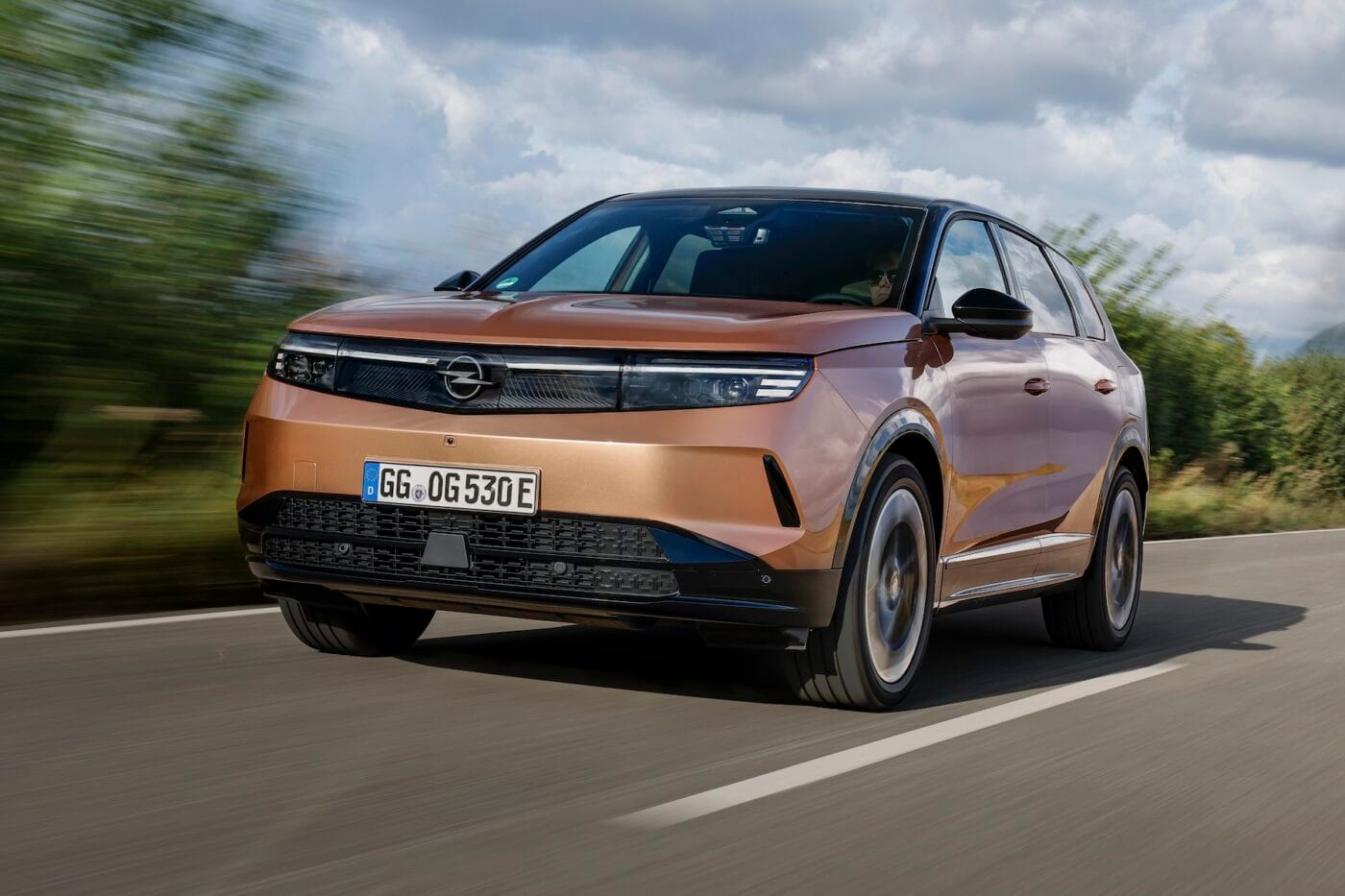
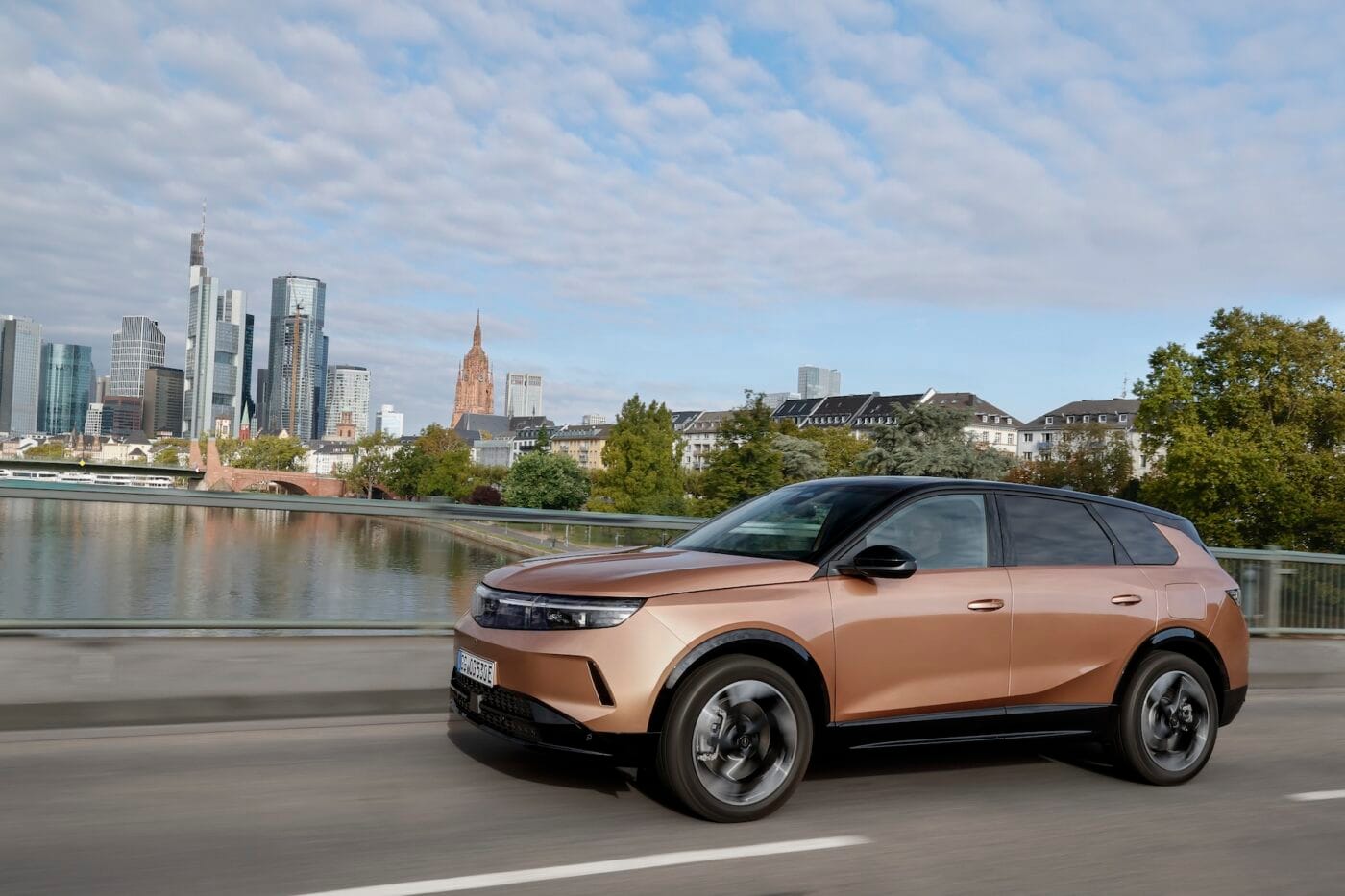
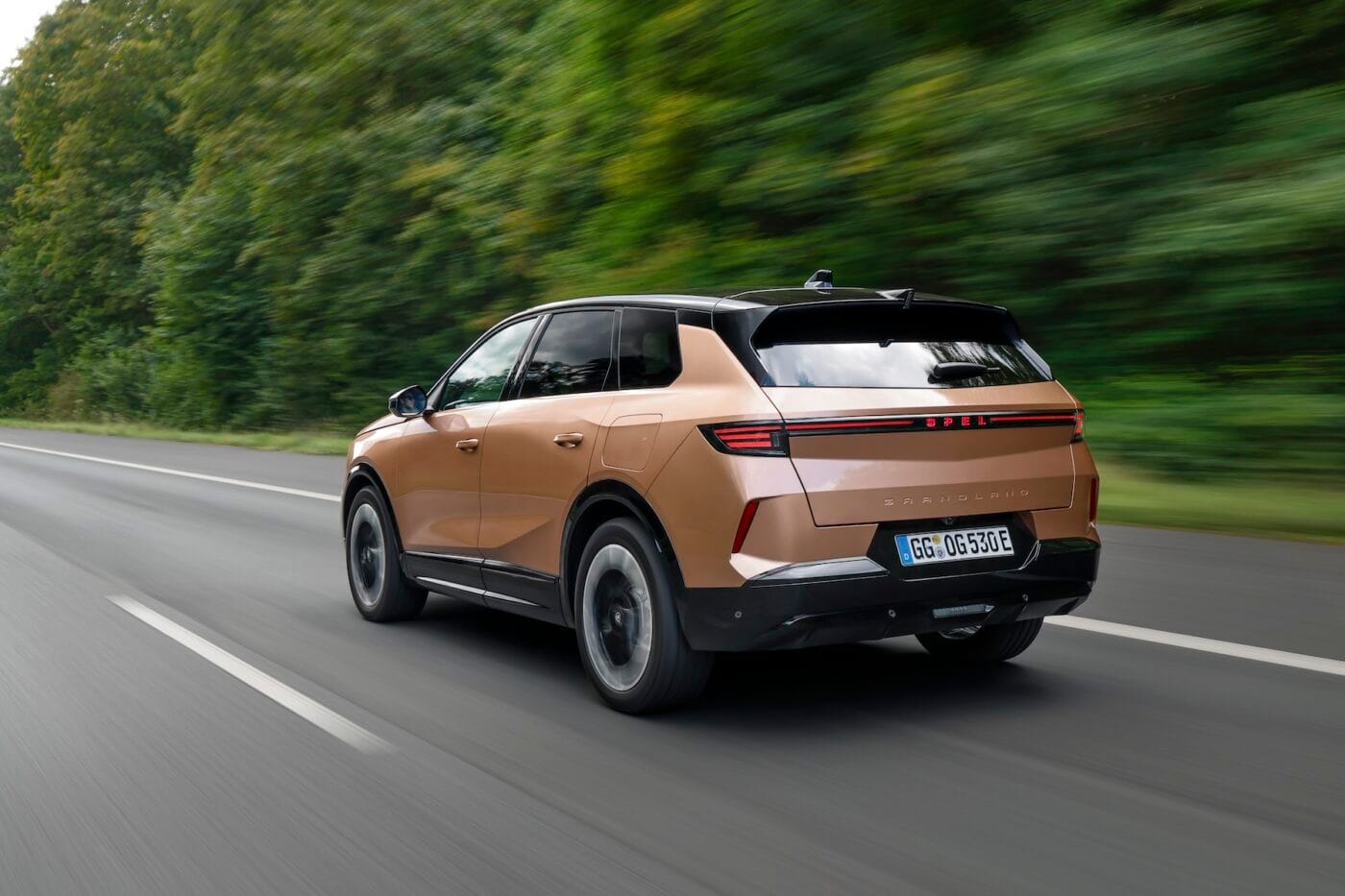
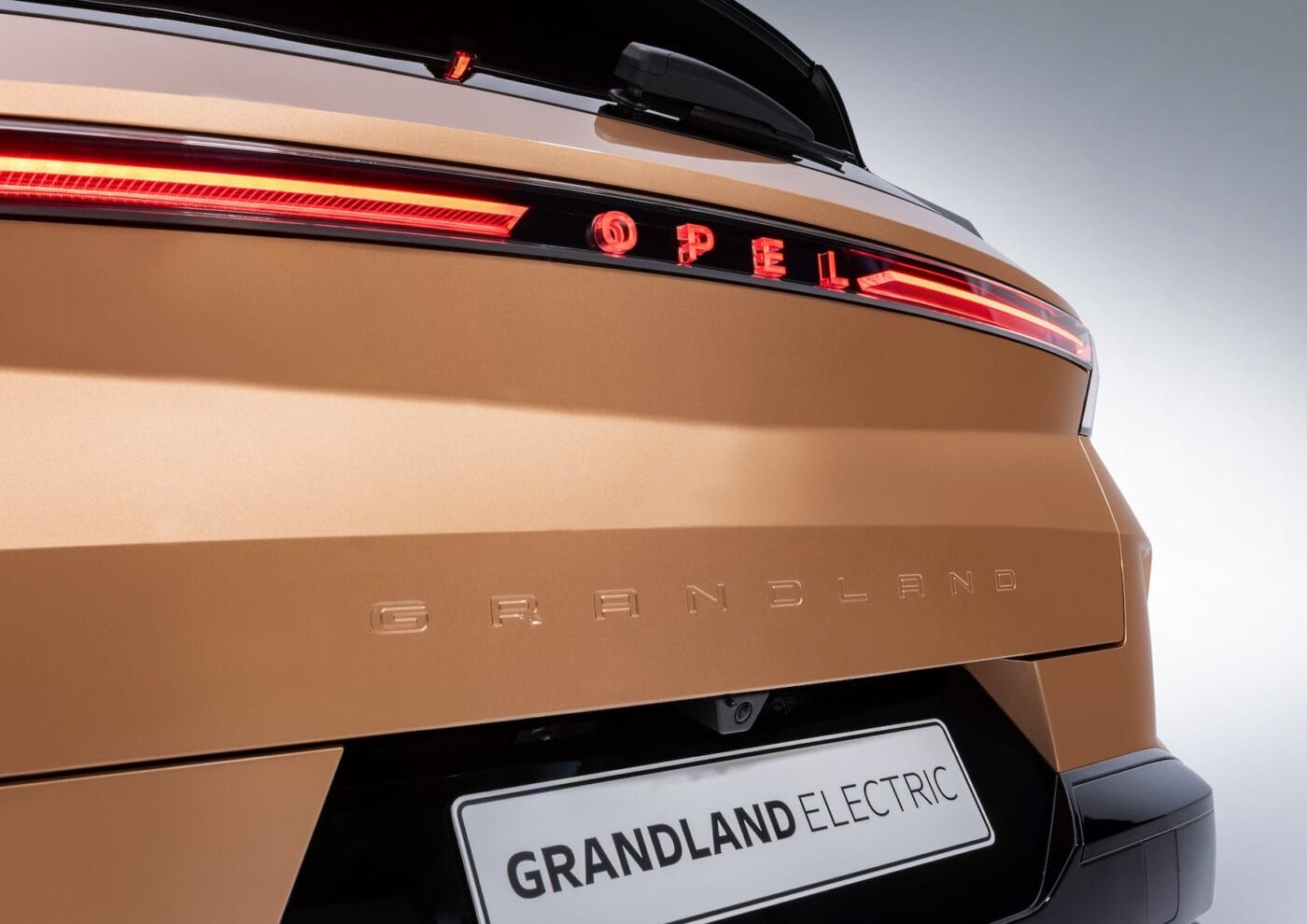
The same can be said of its charging capabilities. While STLA Medium is a new platform, it’s still based on a conventional 400-volt architecture. As a result, DC charging tops out at 150 kW – or 160 kW with the smaller battery. Just for comparison: thanks to its 800-volt system, the similarly sized Hyundai Ioniq 5 can charge at up to 260 kW. Under ideal conditions, Opel’s largest EV takes about 30 minutes to go from 20 to 80 per cent. Not bad. But in many cases, the competition is faster.
Sales figures in Germany also suggest that the Grandland hasn’t yet made a breakthrough. Compared with segment leaders, the SUV remains a rare sight on the road. True, it’s only been on the market for ten months, but it didn’t even crack the top 25 best-selling EVs in Europe for the first half of 2025. VW Group’s ID.4 and Skoda Enyaq, by contrast, are both in the top ten, despite being older and technically unremarkable.
Up to 582 kilometres of range
During a recent media event near Frankfurt Airport, I had the chance to find out whether the Grandland Electric has what it takes to stage a comeback. I drove the front-wheel-drive version with the mid-range 82-kWh battery. As mentioned above, the long-range model has still not hit the road. Opel claims a WLTP range of 582 km for the variant given to us to test, while prices for the GS Line trim start just under €52,000.
Despite its hefty 2.1-tonne curb weight, Opel forgoes adaptive dampers or air suspension in favour of a conventional steel setup. It’s a smart choice: Stellantis frequently emphasises that its cars are tuned for German customer tastes and Autobahn-readiness.
So, anyone expecting a soft, French-style ride can rest easy. The Grandland’s suspension is relatively firm but remains comfortably composed. It communicates the road surface without punishing occupants—potholes, for instance, are heard but not harshly felt.
Even in fast corners, body roll is well contained, while motorway refinement is excellent thanks to good insulation and strong high-speed stability. The chassis tuning is well-judged overall, even if some competitors offer cushier rides. Over cobblestones, a few vibrations do sneak through. The steering, meanwhile, feels a touch too light and could offer more feedback. But Opel gets full marks on driver assistance tech: the adaptive cruise control (ACC) worked flawlessly during testing.
| Grandland Electric | Grandland Electric | Grandland Electric AWD | |
|---|---|---|---|
| Drive | FWD | FWD | AWD |
| Power | 157 kW | 157 kW | 239 kW |
| Torque | 345 Nm | 345 Nm | 509 Nm |
| Acceleration | 9.0 s | 9.0 s | 6.1 s |
| Top speed | 170 kph | 170 kph | 180 kph |
| WLTP range | 523 km | 582 km | 482 km |
| Battery capacity | 73 kWh | 82 kWh | 73 kWh |
| Charging capacity DC | 160 kW | 150 kW | 160 kW |
| Charging time DC 20–80% | 29 min | 29 min | 29 min |
| Price | €46,750 | €47,750 | €59,990 |
Power and Performance
Opel recently added a dual-motor AWD version, but most Grandland Electrics are front-wheel drive. The single front motor delivers 157 kW and 345 Nm – adequate for everyday use, though far from excessive given the weight. It manages 0–100 kph in 9 seconds, with top speed capped at 170 kph.
Behind the wheel, the Grandland feels punchier than the spec sheet suggests. There’s always enough power on tap, even in Eco mode. Those craving more performance should look at the 239 kW AWD model, which hits 100 kph in 6.1 seconds and tops out at 180 kph. However, it comes only in ‘Ultimate’ trim, offers 100 km less range, and costs nearly €60,000, despite using the smaller 73-kWh battery. The larger 82-kWh pack isn’t available with AWD.
Impressively efficient powertrain
Opel quotes a WLTP energy consumption of 17.7 kWh/100 km. That figure seems conservative: driven gently in Eco mode, the Grandland Electric proves very frugal. Over a 30-kilometre mixed route with lots of motorway driving, I recorded an average of 14.3 kWh.
Even with air conditioning on and a few high-speed bursts in Sport mode, my return leg only used 15.6 kWh – still below the official figure. This points to the efficiency of Stellantis’ electric motors, which have earned praise in other group models. In fact, the German publication Auto Bild recently achieved an astonishing 11.4 kWh/100 km average over 1,000 kilometres in a hypermiling test, putting the Grandland at the top of its class. Winter performance remains a question mark, but the standard-fit heat pump inspires confidence.
There might be room to improve efficiency further by tweaking the regenerative braking. It’s adjustable in three levels via steering wheel paddles, and the strongest setting delivers noticeable deceleration. However, one-pedal driving isn’t possible—Opel’s largest EV still requires the brake pedal to stop.
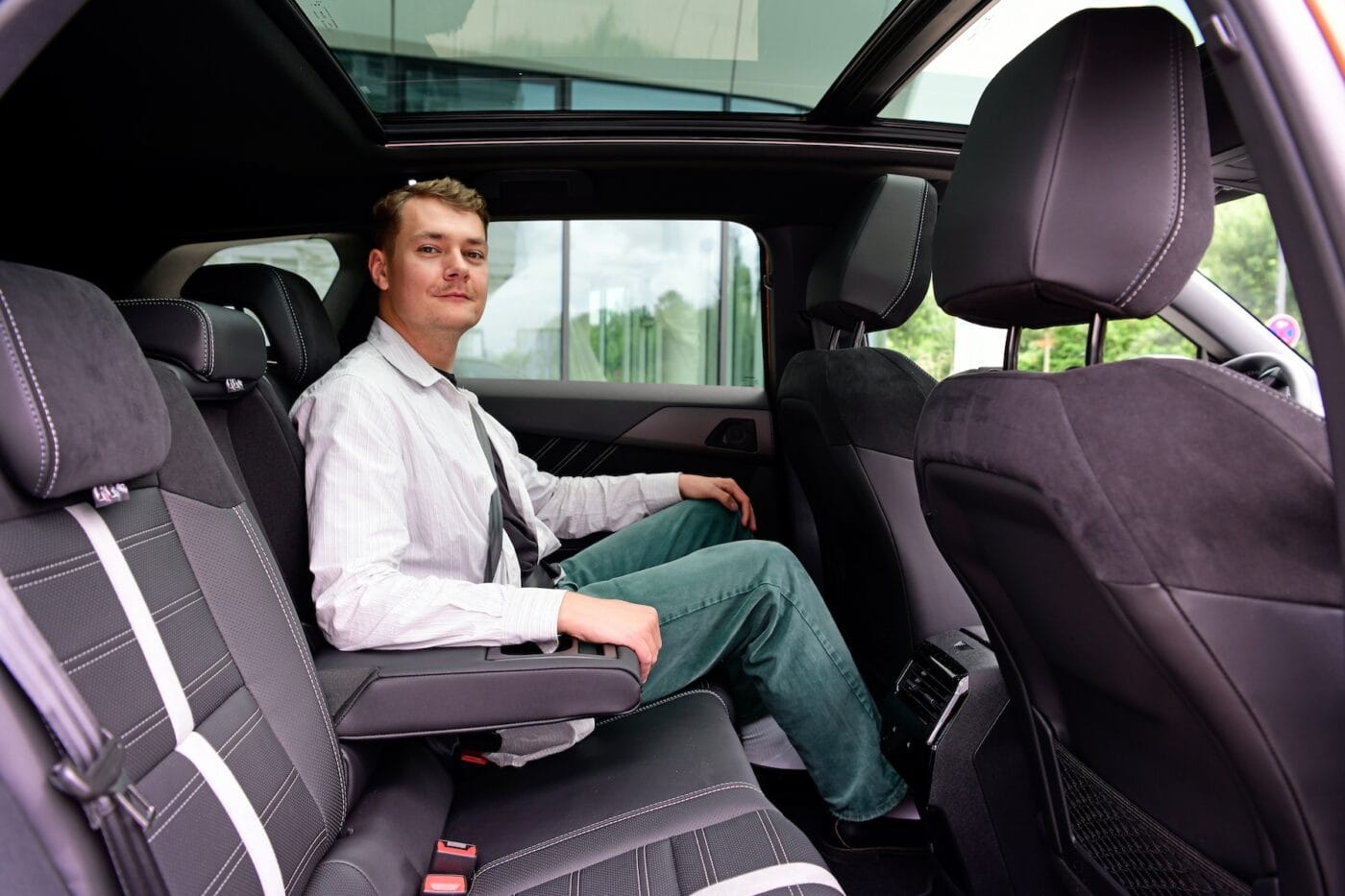
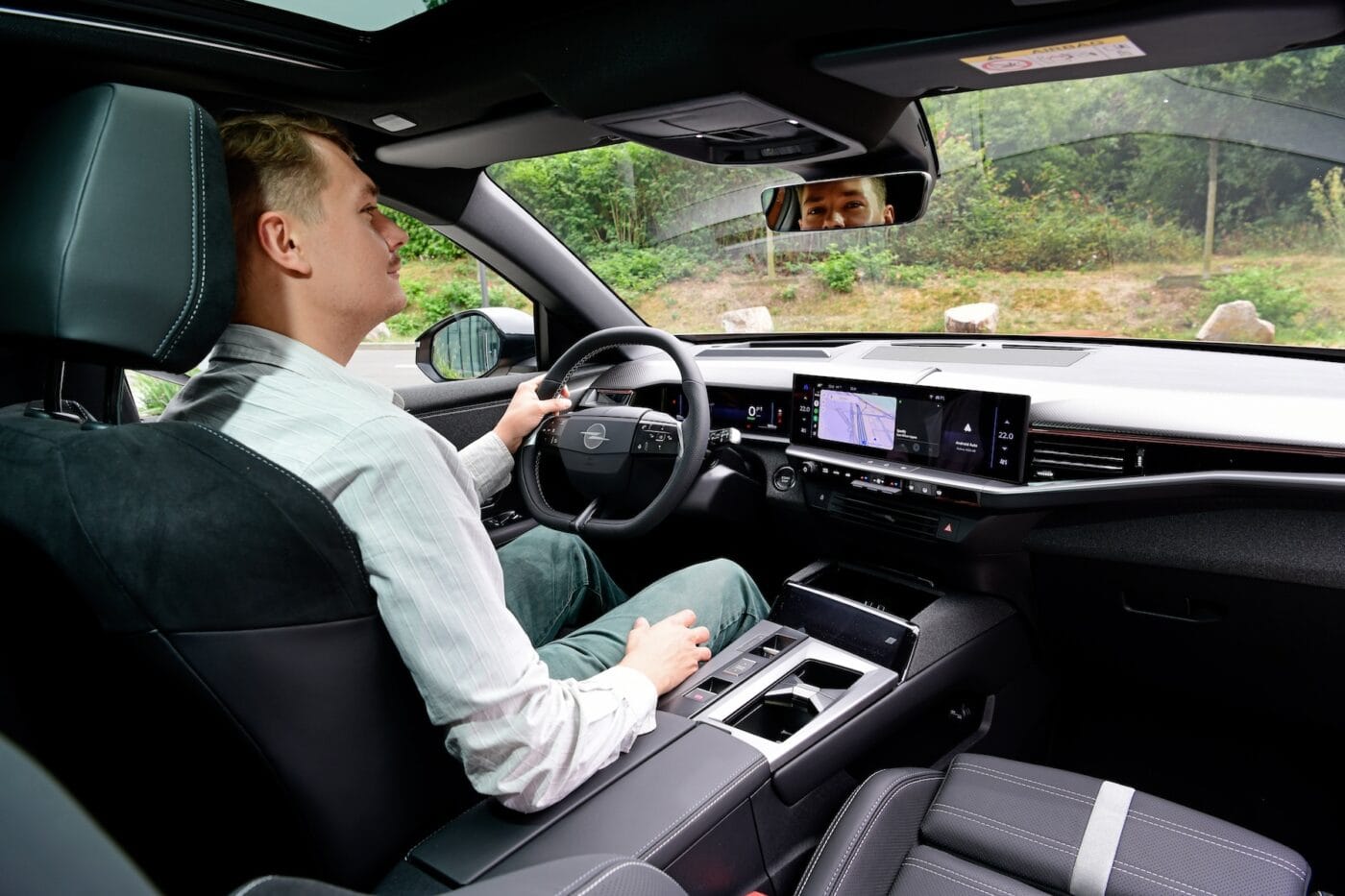
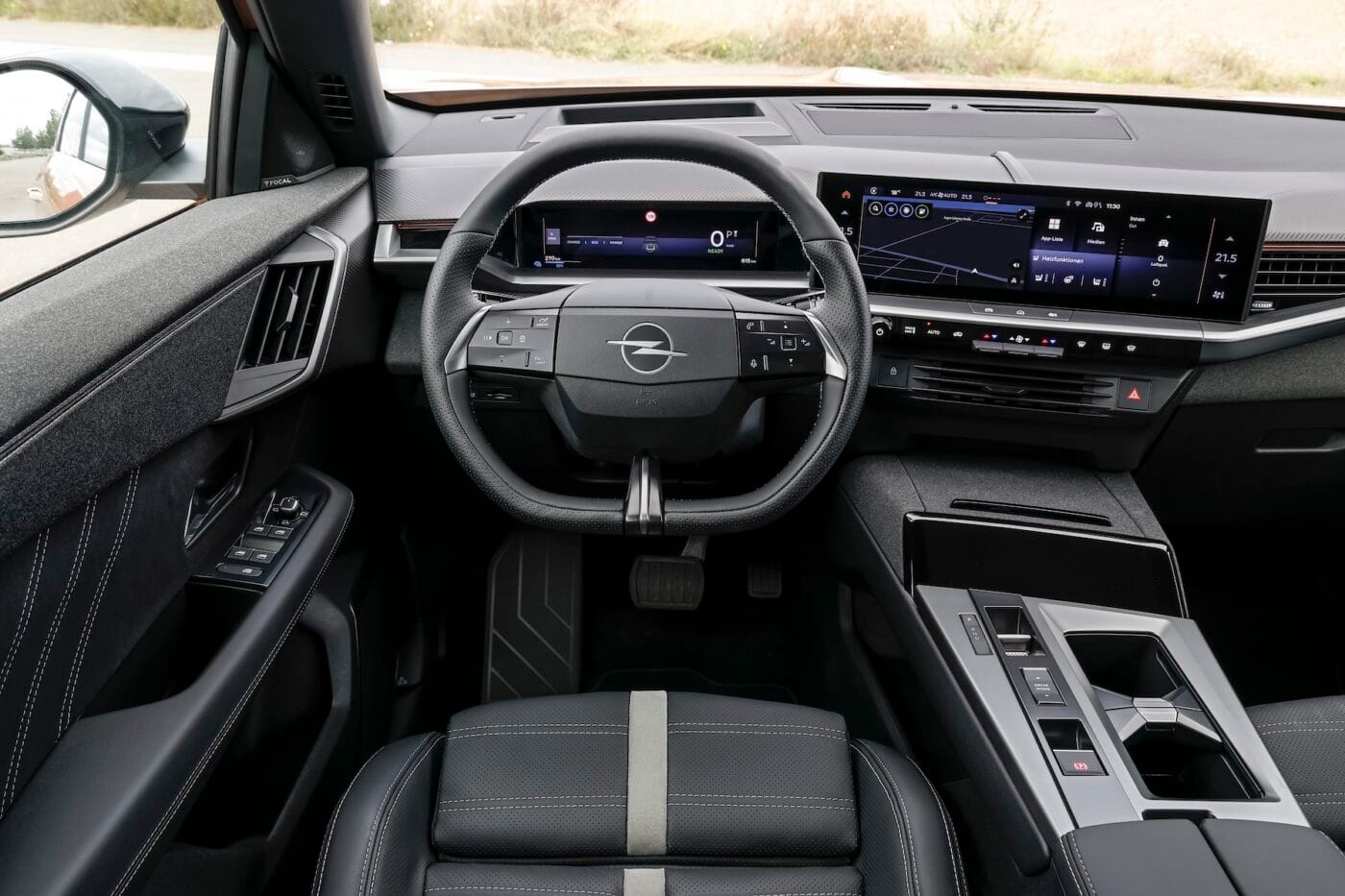
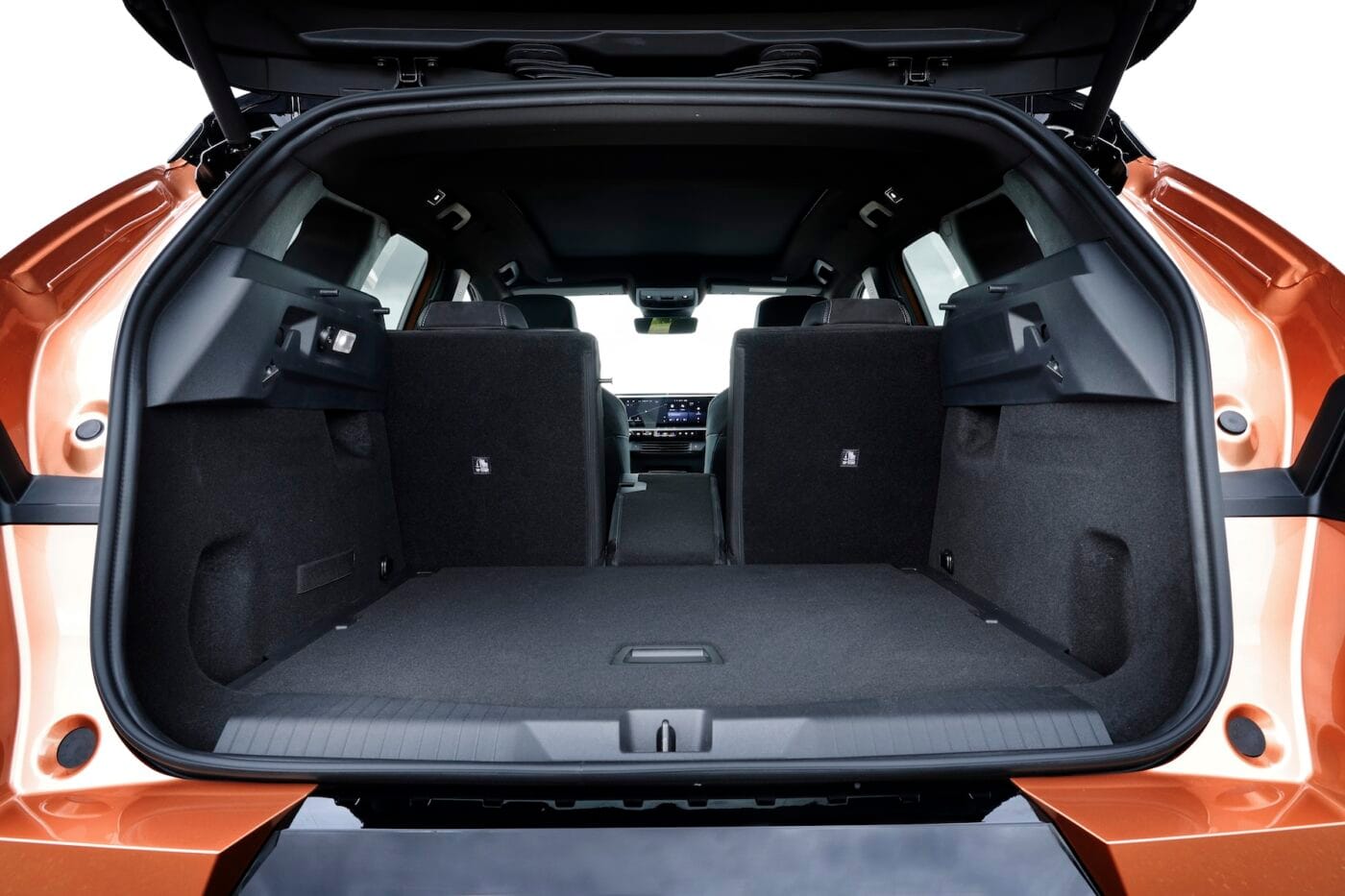
Excellent seats and some analogue controls
Matching the efficient drivetrain is a cabin made for long trips. The ‘Intelli Seat Pro’ front seats, which are standard on GS and Edition trims, carry AGR certification for back health, with adjustable side bolsters and good lateral support. The high driving position also adds to the secure, commanding feel.
The cockpit design is modern, but overly minimalist. It’s also nicely driver-focused, with the 10- or 16-inch central touchscreen angled toward the pilot. A crisp 10-inch digital cluster sits behind the steering wheel. Thankfully, not everything runs through the screen: physical toggles remain for climate control, and there’s a proper volume dial. Still, the infotainment system could use improvement—its layout feels overly complex and unintuitive compared to rivals.
Material quality is strong in the front row. Opel uses some hard plastics, but mostly in areas that are not visible. The dashboard, console and door trims are dressed with fabric inserts, Alcantara, metal-look accents and carbon-look plastics that break up the visuals effectively.
Space is its strong suit
Opel clearly saved costs in the second row. Both the door panels and the rear of the centre console are made of cheap, hard plastic. But in terms of space, the Grandland shines. Rear legroom is generous, even with the driver’s seat all the way back; tall passengers have ample knee clearance. Headroom is solid, too, even with the optional panoramic roof; my 1.85-metre frame had no trouble.
That generous space is one of the Grandland’s strongest assets. The boot offers 550 litres in its standard configuration—beating its Stellantis sibling Peugeot, as well as the Renault Scenic E-Tech Electric and VW ID.4. Only the Skoda Enyaq, at 585 litres, offers more.
Folding the rear seats expands capacity to 1,645 litres—a very competitive figure. The boot floor can be set at two levels, helping accommodate taller loads, and the low loading lip makes the Grandland easy to pack.
Conclusion
With the Grandland Electric, Opel has built a solid and comfortable compact SUV. Its relaxed driving manners, efficient powertrain and spacious interior count in its favour. However, it currently lacks true standout features or competitive pricing to challenge for the top spot in the hyper-competitive C-SUV segment. The long-awaited 98 kWh battery could improve its chances thanks to a WLTP range of 700 kilometres, but unfortunately, its average charging performance detracts from its otherwise great talent as a long-distance car.

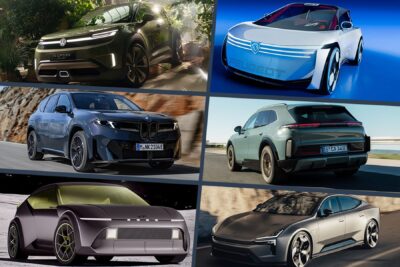


0 Comments